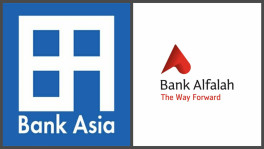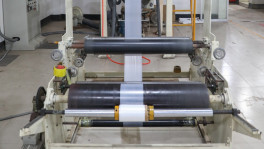From Two Economies to Two Nations: Revisiting Bangladesh’s Economic Transformation
The two economies and two nations of Bangladesh and Pakistan are as different today as they were 50 years ago, although it appears that with the passage of time Bangladesh’s miraculous economic transformation has completely turned the tables against Pakistan

In August 2015, the book, titled "From Two Economies to Two Nations: My Journey to Bangladesh", written by Professor Rehman Sobhan, Chairman, Centre for Policy Dialogue (CPD), was published. This outstanding book, which contains a selected collection of Professor Sobhan's writings mainly from 1961 to 1971, describes how inequality between the East and West wings of Pakistan was so severe that these two regions could effectively be thought of as two economies. While Professor Sobhan does not himself take credit for postulating the concept of "two economies", his writings in the decade prior to 1971 were highly influential in popularising the notion during that time. Through his bold and rebellious work, Professor Sobhan firmly established the idea that disparity was the economic basis of Bengali nationalism and provided important intellectual impetus to Bangladesh's struggle for self-determination. As we are now at a juncture where Bangladesh is about to enter its 50th year of independence from Pakistan, it is an ideal time to revisit the history of how the two economies and two nations have fared over the past five decades.
Over the past 50 years or so, Bangladesh has undergone a complete economic transformation. There are at least 10 keys to Bangladesh's incredible economic turnaround: i) slowdown in population growth rate; ii) cheap and abundant labour; iii) increase in female labour force participation and female empowerment; iv) improvements in literacy and school enrolment, including that of girls v) specialisation based on comparative advantage; vi) utilisation of international support measures for least developed countries; vii) advancements in agriculture and improvements in food security; viii) increase in access to drinking water facilities; ix) decline in infant, neonatal and under-five mortality rates and increase in life expectancy; and x) increase in access to electricity and mobile phones.
In 1960, the total population of East Pakistan was 48 million, which was higher than the population of West Pakistan, which was 45 million. Moreover, in 1961 the population of East Pakistan was growing at 2.8 per cent annually, which was faster than the 2.4 per cent annual population growth rate in West Pakistan. After the war of 1971, the population growth rate in Bangladesh fell substantially and never went back to the levels of the 1960s. On the other hand, the population growth rate of Pakistan kept rising till the early 1980s. As a result of effective population control policies over many years, the population growth rate of Bangladesh in 2019 was 1 per cent per year, which was half of that of Pakistan. On the other hand, Pakistan overtook Bangladesh in terms of population in 1984, and by 2019 the population of Pakistan was 54 million more than that of Bangladesh. Since resources are limited, successfully controlling population has allowed Bangladesh to enjoy numerous benefits.
Even though Pakistan had a higher total population than Bangladesh since 1984, Bangladesh still managed to have a larger labour force than Pakistan for the 24 years up to 2008. Between the years 1990 and 2008, Bangladesh had on average 4 million extra workers in its economy, compared to Pakistan. Moreover, the statutory nominal gross monthly minimum wage of Bangladeshi workers was consistently lower than that of their Pakistani counterparts, giving Bangladesh a greater competitive edge in exports. Thus, a cheap and abundant labour force propelled the Bangladesh economy forward. But how was it possible that Pakistan had more people but fewer workers and Bangladesh had fewer people but more workers? The secret was in the fact that the female labour force participation rate in 1990 was 4 per cent in Pakistan and 7 per cent in Bangladesh. For all the years between 1990 and 2019, the female labour force participation rate in Bangladesh was head and shoulders above that of Pakistan. In 2019 Bangladesh had 14 million extra women working in its economy compared to Pakistan.
The economic empowerment of women is critical to long-term success for any society. The government, private sector and non-government organisations have all played their part in the economic empowerment of women in Bangladesh. In 1982, the government of Bangladesh initiated some social safety net programmes especially targeted towards women and girls, such as the female secondary education stipend. Results from a pilot project showed that girls' secondary enrolments increased from an average of 7.9 per cent to 14 per cent in some project areas and dropout rates fell from 14.7 per cent to 3.5 per cent. In 1994, the highly successful programme was launched nationwide. Female students received a monthly sum of money ranging from Taka 25 in Class 6 to Taka 60 in Class 10, as well as payments for new books and exam fees, on condition of a minimum of 75 per cent attendance rate, at least a 45 per cent score in annual school exams, and staying unmarried until sitting for the Secondary School Certificate (SSC) or turning 18. The female secondary education stipend programme in Bangladesh was not only effective in increasing girls' enrolment in schools, but also succeeded in providing a host of benefits, such as increasing the ratio of female students in secondary schools, improving female literacy rate, lowering fertility rate, controlling population growth rate and increasing female labour force participation. As a result of the catalytic benefits of its successful female secondary education stipend programme, Bangladesh managed to advance ahead of Pakistan in terms of several key socio-economic indicators. In 2018, girls comprised 54 per cent of pupils in secondary schools in Bangladesh, whereas in Pakistan only 44 per cent of secondary school pupils were girls. In 2017, adult female literacy rate was 70 per cent in Bangladesh, but only 46 per cent in Pakistan.
The private sector in Bangladesh has also advanced the cause of female empowerment by providing employment opportunities to 3 million women working in the ready-made garments sector. Moreover, the non-government organisations of Bangladesh have also played an instrumental role in the empowerment of women in Bangladesh by providing microcredit for women entrepreneurs and support services for women. For example, when Grameen Bank was awarded the Nobel Peace Prize in 2006, it had already provided small long-term loans, equivalent to USD 100 on average, on easy terms to more than 7 million borrowers, of which 95 per cent were women. Or say, for example, during 1980-1990, BRAC taught over 12 million women how to prepare oral rehydration therapy at home with common salt and unrefined brown sugar to treat dehydration during diarrhoea. However, most importantly, the women of Bangladesh have empowered themselves through their own indomitable spirit, incomparable courage and incredible industriousness.
International trade theory says that countries should specialise in the production and export of goods and services in which they have a comparative advantage. Revealed comparative advantage is a concept based on Ricardian trade theory, which posits that patterns of trade among countries are governed by their relative differences in productivity. Generally, the higher the value of a country's revealed comparative advantage for a product, the higher is its export strength in that product. Analysis of data of 259 products from the United Nations Conference on Trade and Development (UNCTAD) shows that Pakistan has a higher revealed comparative advantage than Bangladesh in 185 products, and Bangladesh has a higher revealed comparative advantage than Pakistan in 74 products. Thus, Pakistan is a competitive producer and exporter of more products than Bangladesh. However, Bangladesh's sum of revealed comparative advantage indices in the products where it has higher revealed comparative advantage than Pakistan is greater than Pakistan's sum of revealed comparative advantage indices in the products where it has a higher revealed comparative advantage than Bangladesh. Thus, although Pakistan can competitively produce and export more products than Bangladesh, Bangladesh is significantly more competitive in the products where it has a higher revealed comparative advantage.
In conjunction with specialising based on comparative advantage, Bangladesh has also effectively utilised international support measures (ISMs) for least developed countries (LDCs). In 1975, Bangladesh struggled to be recognized as a Least Developed Country because of its large 78-million population, although it met all 3 criteria for inclusion: per capita income, share of manufacturing in total output and literacy ratio. The United Nations Committee for Development Policy (UN-CDP) was reluctant to include Bangladesh in the LDC group because of the 25 LDCs at the time, 19 had populations less than 10 million and six had populations less than 20 million. However, since population was not a criterion for inclusion or exclusion and since Bangladesh's vulnerabilities were unique, the country was accepted into the LDC group and became eligible for ISMs meant for LDCs. Once included in the LDC group, Bangladesh achieved one of the highest utilisation rates of preferential trade arrangements and became the prime example of an LDC which has managed to utilise ISMs appropriately and subsequently increase its exports to the rest of the world. For instance, Bangladesh's garment exporters use duty-free, quota-free (DFQF) market access to their biggest export market, the European Union, under the "Everything But Arms" scheme, as well as the World Trade Organization's (WTO) Trade Related Intellectual Property Rights (TRIPS) general waiver and public health waiver for LDCs, which has promoted the country's pharmaceutical industry. LDC-specific preferential rules of origin, such as the single transformation rule for preferential treatment for LDCs, has helped Bangladesh's woven garments export, since the country imports most of its fabrics from abroad. Thus, we find that in 1960, West Pakistan's exports of goods and services were almost twice as much as that of East Pakistan, but in 2019, Bangladesh's exports were 1.2 times higher than those of Pakistan. Moreover, in 1973, Pakistan's total reserves were 4 times than that of Bangladesh, but in 2019, Bangladesh's total reserves were almost twice those of Pakistan.
Since its emergence, Bangladesh has made major advancements in agriculture which have led to improvements in food security and increase in life expectancy. In 1963-64, per capita consumption of sugar was 3.76 times higher, per capita consumption of tea was 7 times higher, per capita consumption of milk and butter was 4.10 times higher, and per capita consumption of mutton, beef and fish was 4.25 times higher in West Pakistan compared to East Pakistan. However, data from the Food and Agriculture Organization (FAO) of the United Nations show that in 2017-2019, the number of undernourished people was 20.9 million in Bangladesh and 26.1 million in Pakistan. These improvements in nutrition have meant that on average Bangladeshis today are living much longer lives than before. In 1971, life expectancy at birth was 47 years in Bangladesh and 53 years in Pakistan. However, in 2018, life expectancy at birth was 72 years in Bangladesh and 67 years in Pakistan.
Apart from food, Bangladesh has also managed to increase access to drinking water facilities to its population more than Pakistan. For instance, in 2017, 97 per cent of the population had access to at least basic drinking water and 55 per cent of the population had access to safely managed drinking water in Bangladesh, whereas in Pakistan 91 per cent of the population had access to at least basic drinking water and 35 per cent of the population had access to safely managed drinking water. Improvements in access to food and water have had a positive impact on the health and wellbeing of children in Bangladesh. In 2019, infant mortality rate, under-five mortality rate and neonatal mortality rate were all lower for Bangladesh compared to Pakistan.
Besides basic needs such as food and water, Bangladesh has also made improvements in terms of providing other essential human needs such as electricity and telecommunications. In 1998, access to electricity was enjoyed by 27 per cent of the population in Bangladesh and by 70 per cent of the population in Pakistan. However, in 2018, electricity access had reached 85 per cent of the population of Bangladesh and 71 per cent of the population in Pakistan. In 1999, there were 0.12 mobile cellular subscriptions per 100 people in Bangladesh and 0.19 mobile cellular subscriptions per 100 people in Pakistan. But in 2019, there were 101.55 mobile cellular subscriptions per 100 people in Bangladesh and 76.38 mobile cellular subscriptions per 100 people in Pakistan.
Since 1971, at least three major factors have driven Bangladesh's socio-economic progress but have held back Pakistan. First, Bangladesh has had less terrorism, extremism and separatism than Pakistan. Between 1977 and 2018, there were 1,682 terrorist incidents, or 41 terrorist incidents per year on average, in Bangladesh, compared to 14,839 terrorist incidents, or 361 terrorist incidents per year on average, in Pakistan. Second, Bangladesh has maintained a lower expenditure on the military than Pakistan. In 2019, Pakistan spent almost 3 times more than Bangladesh, in absolute terms, on the military. For all the years for which data were available at the time of writing, Pakistan had always consistently spent more on its military than Bangladesh in per capita terms, as a share of GDP and also as a share of government expenditure. Finally, Bangladesh has never pursued nuclear weapons. According to estimates by Stockholm International Peace Research Institute (SIPRI), Pakistan's nuclear arsenal consisted of 160 nuclear warheads. According to the International Campaign to Abolish Nuclear Weapons (ICAN), Pakistan spent a total of USD 1 billion on nuclear weapons in 2019, which would be equivalent to spending USD 1,903 spent every minute on nuclear weapons. Pakistan spends an estimated 10 per cent of its military budget, or approximately 0.004% of its GDP, on nuclear weapons which would be sufficient for providing 1 USD at purchasing power parity (PPP) per day to all orphans in Pakistan for 1 year.
The two economies and two nations of Bangladesh and Pakistan are as different today as they were 50 years ago, although it appears that with the passage of time Bangladesh's miraculous economic transformation has completely turned the tables against Pakistan. As can be assessed from the preceding discussion, the average Bangladeshi person today is in many ways living a better life than the average Pakistani person.
Despite its achievements, Bangladesh has come a full circle as five decades after its emergence it is once again experiencing a rise in disparity within its society. The gulf between rich and poor in Bangladesh has been widening, as manifested in the rise in the value of the Gini coefficient from 0.36 in 1973-74 to 0.48 in 2015-16. The share of national income held by the poorest 40 per cent of the population in Bangladesh has declined from 29.23 per cent in 1992 to 13.01 per cent in 2016. In 2010, the richest 5 per cent households were 31 times richer than the poorest 5 per cent households, but this difference magnified astronomically in 2016 when the richest 5 per cent households were 121 times richer than the poorest 5 per cent households.
However, the economic inequality that has resurfaced in Bangladeshi society is different in nature from the economic inequality which existed prior to the nation's independence. Before independence, economic inequality in Bangladesh was a result of Pakistanis depriving Bangladeshis of equal opportunities. Therefore, there was a clear division between the oppressor and the oppressed, which provided the economic basis for Bangladeshi nationalism and supported the independence movement. However, after independence economic inequality has made a comeback in Bangladesh, and this time we have nobody to blame but ourselves. Therefore, as a free nation Bangladesh must now act urgently to protect and defend the right to equal access to economic opportunities for all and the right to an equitable sharing of economic benefits for all, since these were some of the basic rights which the Bangladeshis fought for prior to independence and had hoped to achieve after independence.

Senior Research Associate, Centre for Policy Dialogue. [email protected]


 Keep updated, follow The Business Standard's Google news channel
Keep updated, follow The Business Standard's Google news channel
















